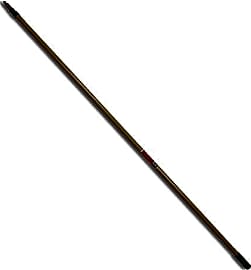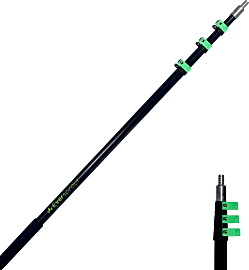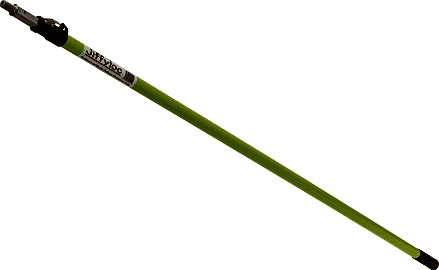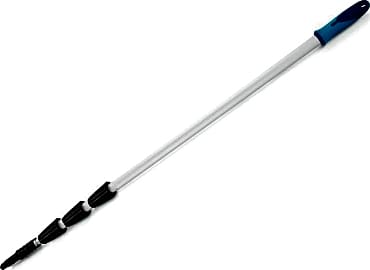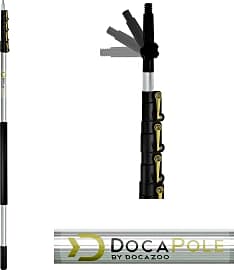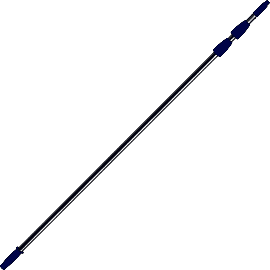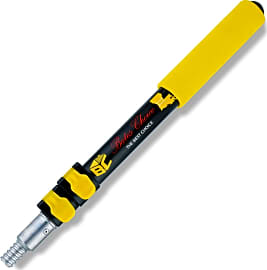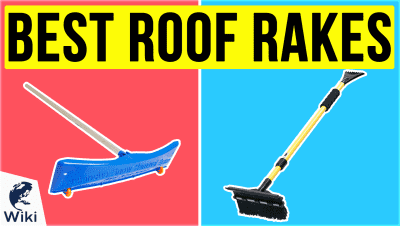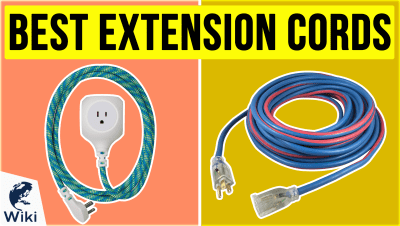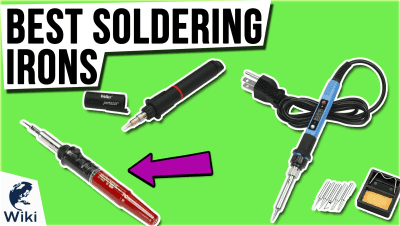The 10 Best Extension Poles

This wiki has been updated 39 times since it was first published in July of 2015. When you need to clean your gutters or second-story windows, or paint the exterior of your home, why drag a heavy, cumbersome ladder from place to place when you can use one of these handy extension poles? They are available with various attachments that make it a snap to complete all kinds of chores around the house or in the yard that would normally be out of reach. When users buy our independently chosen editorial selections, we may earn commissions to help fund the Wiki.
Editor's Notes
December 07, 2020:
Thanks to its rugged construction and ease of use, we've kept the Unger OptiLoc as the choice to beat, with the Wooster Brush Sherlock following closely behind. These work with a variety of attachments, including some bulb changers, helping to make your home upkeep and repair just that much easier. We also saved a spot for the Eversprout Twist-On. It's a good model to have on hand for a range of tasks, and we appreciate that the company is committed to promoting reforestation.
After some consideration, we have opted to remove the affordably priced Ettore 43012. Even though it's not prone to rusting, it can't stand the test of time the way many other models can — and you'll be frustrated if it fails you in a pinch. If you're looking for a relatively budget-friendly model, the Purdy Power, the Unger Professional, or the Jiffyloc Heavy Duty might just do the trick. Note that you can't choose which color you receive with the Jiffyloc model. This probably won't make much of a difference when it comes to day-to-day use, but if you had your heart set on one that's exactly like the photos, you might be disappointed.
Finally, although we've found plenty of options that will help you with those tasks that are way out of reach, we also decided to add one option of only moderate length. This model, the Bates Choice Telescoping, gives you only an additional three feet of reach, which can be good or bad, depending upon your needs. Keep in mind that a shorter pole will probably not flex as much as very long ones, so if you do need only a moderate amount of reach, this one might help you achieve it with more stability.
December 17, 2019:
Although we had already noted its rather cumbersome weight, we discovered that the Shur-Line Easy Reach lacks durability as well, breaking after a few uses in many cases. We removed this item from the list, as well as two additional models (the Dynamic Twist and Miloo Extender) due to a lack of availability.
Reports indicate that the craftsmanship of the Wooster Brush Sherlock is top notch, and we noted that it remains effective in cold weather conditions as well. It’s available in an extensive range of sizes, offering a version as compact as two feet in length. We moved this item up.
Although it only reaches 12 feet in length, the Ettore 43012 is an economical choice that should last for years without rusting or corroding. We pointed out that it’s easy to maintain control of the Eversprout Twist-On, even when it’s fully extended, which is somewhat rare for poles that reach up to 24 feet.
October 15, 2018:
Noted a weak locking mechanism on the Dynamic Twist. Removed the Zip-Up 3rd Hand due to quality concerns. Discovered consistent reporting that the Unger Professional is extremely manageable given its extensive reach, prompting a rise in the rankings. Dropped the Shur-Line Easy Reach several spots after learning that users find its stickers annoying and difficult to remove.
Special Honors
Dotworkz DomeCleanerPro This commercial-quality pole is a step up in class to a typical household model, with a rigid carbon fiber tube and seven collapsible sections. With a 40-foot maximum extension, you’ll be able to access windows, gutters and tree limbs in some seriously hard-to-reach areas. dotworkz.com
Reach High So You Can Stay Low
Just because they’re colloquially markers of avoidance doesn’t mean they can’t serve a very important purpose in some exchanges.
At some point in your life you’ve definitely either heard or said the sentence, “I wouldn’t touch it with a 10-foot pole.” In the majority of instances, it’s a way of saying that you wouldn’t go anywhere near a certain person or thing, and that even if you had a way of interacting with it or them from a distance, you’d still choose not to.
In terms of people, the saying is a little cruel, though it makes a lot of sense when referring to things that are too disgusting to approach. But what about the things that deserve specifically to be touched with a long pole? There are some instances where a long pole is exactly what you need to interact with a certain substance or surface. Just because they’re colloquially markers of avoidance doesn’t mean they can’t serve a very important purpose in some exchanges.
Take the sides of your home, for example. Depending on the climate in which you live and the material from which your siding is made, the exterior of your house can begin to look dirty over time. Some people invest in power washers that can spray upwards with enough force to remove a bit of this environmental sediment, but these can often soak the user and result in runny streaks of filth on the home.
In other cases, people will take a bucket and a sponge, set up a ladder and risk their lives just to clean up their house. According to the Centers for Disease Control, 43 percent of fatal falls that occurred between 2001 and 2011 involved a ladder. The scary thing is that fatality rates in falls don’t reach close to 100 percent until you get up above 150 feet. While that might make a fall from the second story of your home seem safer, all it really means is that you’re more likely to survive the fall and suffer paralysis or traumatic brain injury.
The responsible thing to do in these situations is employ the services of an extension pole. As an investment, an extension pole is rather modest, and many will allow you to reach the farthest corners of your siding, eaves, and roofs.
The Many Uses Of An Extension Pole
While the extension pole is a pretty simple instrument, it can achieve a great number of things. This is primarily due to the many different heads a pole can support, but if you’re still not sure you’d get enough use out of one, pay close attention to the following.
This will save you from walking the whole circumference of the pool on a hot day, and still allow you to clear all those leaves.
Extension poles are the ideal painter’s assistant. You can use them indoors and out for exceptional reach and leverage with a roller. They shine in particular when painting large outdoor structures.
You can also use an extension pole to increase the reach of a roof rake. These devices help you clear snow from your rooftops, preventing ice buildup and potential structural damage.
If you have a particularly large pool, you can attach a skimmer with acceptable threads to your extension pole. This will save you from walking the whole circumference of the pool on a hot day, and still allow you to clear all those leaves.
Some less common uses of an extension pole include changing the channel when you’ve lost your remote, ding-dong-ditch from a distance, and braining zombies at a safe range.
Which Extension Pole Is Right For You?
Most extension poles look pretty similar. They may come in different colors, but that isn’t necessarily a marker of anything other than the brand’s preference. They mostly all adhere to a thread standard that applies to the vast majority of available heads for mopping, painting, sweeping, and more. That means that you can take anything in your home that doesn’t have proprietary threading or contacts, remove the head from its regular-length pole, and attach it to your shiny new extension pole.
Given that there are more similarities than differences among the options on our list, you might be tempted to just grab the least expensive pole you see and call it a day. There’s nothing inherently wrong with that, but you might find that it doesn’t quite quit your needs.
They may come in different colors, but that isn’t necessarily a marker of anything other than the brand’s preference.
Take a look at the materials from which a given pole is made. Plastics will do a better job at resisting corrosion from moisture, but they stand to weaken with exposure to extreme temperatures. If you know you take pretty good care of your stuff, and you’re going to keep your pole in a garage attached to the house that stays pretty warm, plastic might do you fine.
Among metal models, you’ll find that aluminum of varying quality, as well as more traditional steel, dominates the market. Even metal models often have plastic adjustment points, however, so make sure these seem sturdy. The last thing you want is for your pole to come collapsing back at you in the middle of a job.
On the topic of extension points, some units allow you to dial in a specific length as you extend, while others have stops along the way that lock into place. If you’re working with heavier or more fragile heads, a locking unit would be smart. The downside is that they limit your flexibility, but you can always make the pole a little too long and then choke up on the handle to compensate. If you need precision, go with a pole that doesn’t have locking points, but make sure you tighten it enough to keep it safe.
Length and load capacity are the two most basic aspects of an extension pole that warrant attention. A head unit will place more pressure on the pole the longer the pole extends. If you need to put a heavy head on a pole that can’t support its weight at full extension, you’re going to run into trouble. Likewise, if that pole is just a few inches too short to do the job, you’re going to need a step-stool or small ladder, and then we’re back in danger again.


